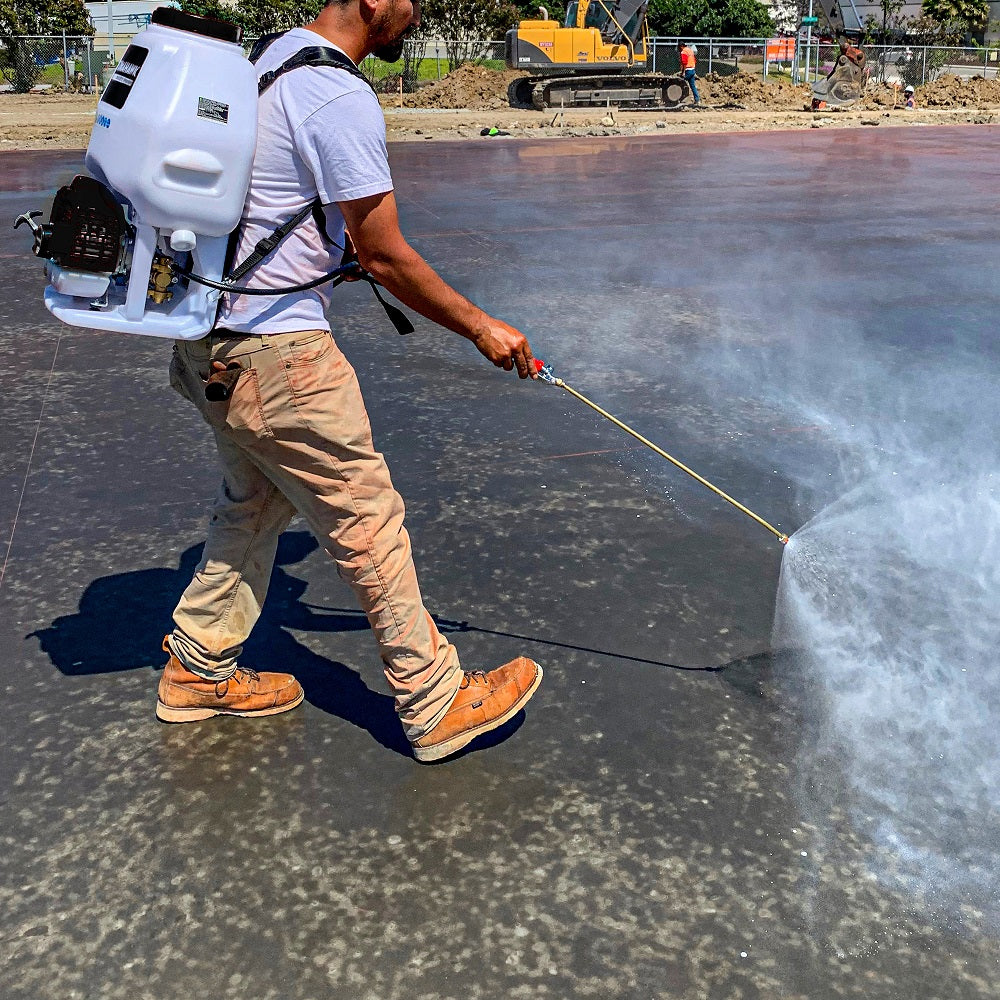Concrete sprayers, also known as concrete pumps, are powerful tools that revolutionize the process of concrete placement. These machines allow for efficient and accurate distribution of concrete, making them indispensable in various construction projects. Whether you're working on a residential foundation, a commercial building, or an infrastructure project, mastering the use of concrete sprayers is essential for achieving smooth, precise, and timely concrete placement. This comprehensive guide explores the key aspects of using concrete sprayers effectively and efficiently.
1. Understanding Concrete Sprayers
Concrete sprayers are machines designed to transport and distribute concrete from a source to the desired location. They consist of a pumping mechanism, a hydraulic system, and a delivery hose. The pumping mechanism creates pressure that propels the concrete through the hose, allowing it to be accurately placed in the intended area.
2. Preparing for Operation
Before operating a concrete sprayer, thorough preparation is essential:
-
Inspect the Machine: Ensure that the concrete sprayer is in proper working condition. Check for any signs of wear, leaks, or malfunctions.
-
Positioning: Position the sprayer in a location that provides easy access to the concrete source and the placement area.
-
Connect Hoses: Connect the delivery hose to both the sprayer and the nozzle. Ensure that all connections are secure and free from kinks or bends that could restrict the flow of concrete.
3. Mixing and Loading Concrete
Concrete sprayers require a consistent and workable concrete mix. Follow these steps to ensure proper concrete preparation:
-
Batch Mix: Mix the concrete in batches according to the specifications of the project. Achieving the right consistency is crucial for smooth pumping.
-
Avoid Blockages: Use aggregates and materials that are compatible with the sprayer's pumping mechanism. Aggregates that are too large can lead to blockages in the hose.
-
Monitor Flow: Continuously monitor the flow and consistency of the concrete mix to prevent clogs and ensure efficient pumping.
4. Operating the Concrete Sprayer
Operating a concrete sprayer requires precision and attention to detail:
-
Start Gradually: Begin with a low pump setting and gradually increase the pressure as the concrete starts flowing smoothly.
-
Adjusting Flow: Use the control panel to adjust the flow rate and pressure based on the requirements of the placement area.
-
Maintain Consistency: Maintain a consistent flow of concrete to avoid interruptions or uneven distribution.
5. Placing the Concrete
Proper concrete placement is vital for achieving the desired results:
-
Positioning the Nozzle: Position the nozzle at the desired location for concrete placement. Hold the nozzle at the appropriate angle to control the spread of the concrete.
-
Maintaining Smooth Motion: Move the nozzle in a steady and controlled motion to ensure even distribution and prevent buildup.
6. Finishing and Cleanup
After concrete placement, follow these steps for a successful finish and cleanup:
-
Finishing: Use appropriate tools, such as trowels or floats, to achieve the desired surface finish on the freshly placed concrete.
-
Cleaning: Clean the sprayer and hoses thoroughly to prevent concrete buildup and clogs. Use water to flush out any remaining concrete.
7. Safety Precautions
Safety is paramount when using concrete sprayers:
-
Protective Gear: Wear appropriate personal protective equipment (PPE), including gloves, safety glasses, and hearing protection.
-
Stability: Ensure that the sprayer is stable and positioned on a level surface before operation.
-
Emergency Stop: Familiarize yourself with the emergency stop button or switch on the machine in case of any unforeseen issues.
Mastering the use of concrete sprayers requires a combination of technical understanding, experience, and attention to detail. By following proper procedures for preparation, operation, placement, and cleanup, you can achieve precise and efficient concrete placement in various construction projects. Remember that practice and familiarity with the specific sprayer model you're using play a significant role in achieving optimal results. With the right knowledge and skills, you'll be well-equipped to harness the power of concrete sprayers and contribute to successful construction endeavors.










